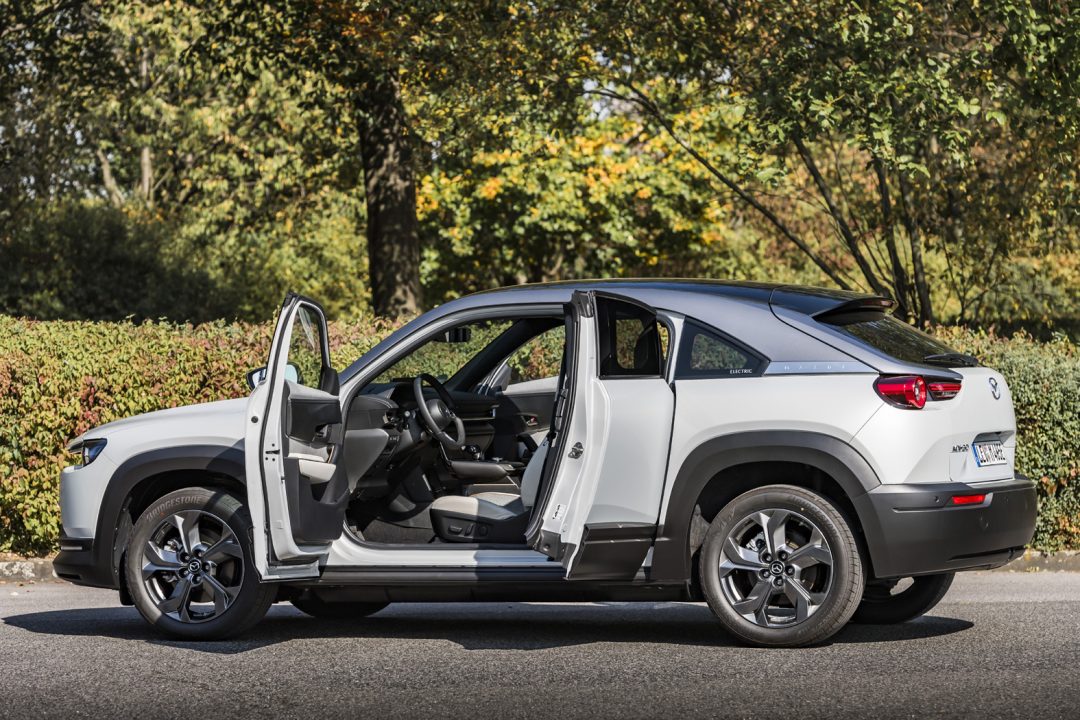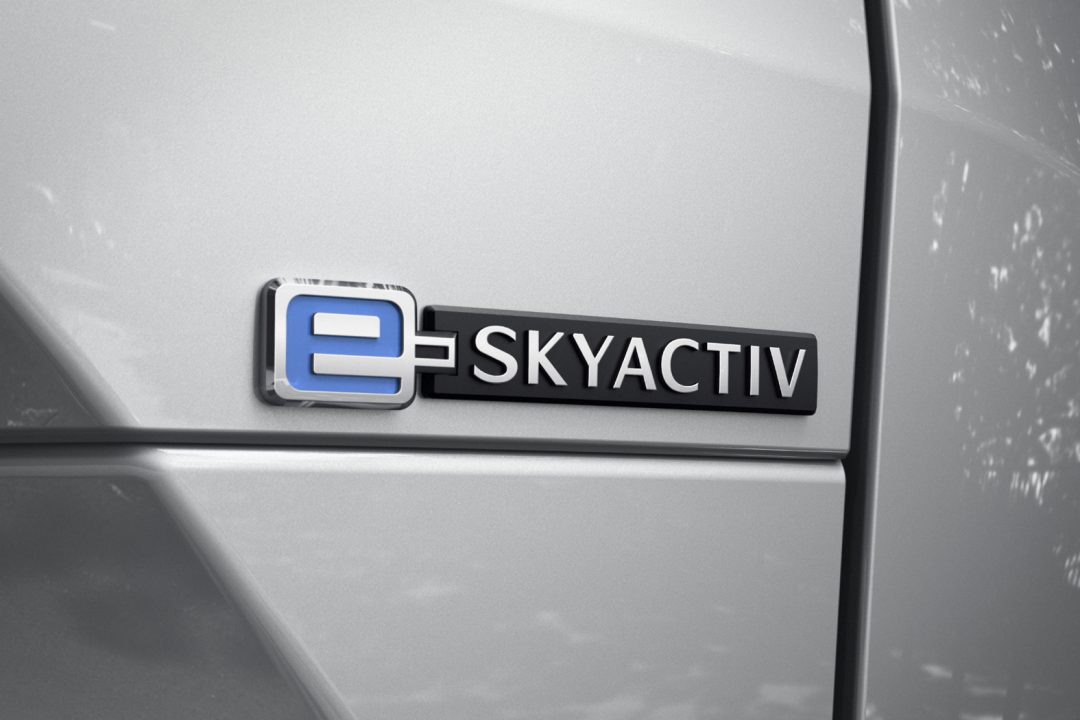Mazda electric SUV charges in

MAZDA is a relative newcomer to the all-electric party. | say relative, because the firm has been dabbling in electric propulsion for 50 years after it unveiled the bubble-shaped EX-005 electric vehicle at the 1970 Tokyo Motor Show.
So when this first electric production model, the MX-30, made its debut you could be sure there was plenty of know-how in the background.
In its centenary year and enhancing green credentials and sustainability, it also pays tribute to the firm which was founded as a cork producing firm, with cabin features like cork lined centre console trays and inner side door handles which also incorporate fibres from recycled plastic bottles.
The first thing to say is that it doesn’t look like an electric car, this Mazda has the look of the other SUVs in its stable – they are arguably the most stylish on the market.
It has many unique features, but the business end is the combination of the electric motor and a lightweight 35.5kWh lithium-ion battery with a claimed range of around 125 miles.
Not the greatest EV range, but Mazda is slightly ambivalent about the future of electrification and overall CO2 reduction savings being offset by battery production costs and remains firmly committed to cleaner, ever more efficient combustion engines like the high-tech SKYACTIV petrol compression combustion engine.
However, the firm describes this battery as ‘right-sized’ for most buyers, where average daily journeys are between 25 and 30 miles.
It comes with a Type 2 AC charging cable and a socket for DC rapid charging, which allows for charging from 20 to 80 per cent battery in around 36 minutes and with and has a competitive starting price of £26,045 , inclusive of the government latest – and reduced – £2,500 OLEV grant.

As with most electric cars it also delivers rapid acceleration for an engaging driving experience, zero tailpipe emissions and low running costs in the form of road tax and benefit in kind taxations bands.
There are three trim levels, SE-L Lux, Sport Lux and GT Sport Tech with the entry level including 18-inch alloys wheels, black door mirrors and grille, single tone paint design with a choice of five colours, LED daytime running lights, cruise control, navigation, head-up display, an eight-speaker sound system and reversing camera.
The range-topper driven here adds front wiper de-icer and a power and tilt sunroof, while inside a heated steering wheel and 12-speaker Bose surround sound and a 360-degree view monitor.
In common with SUVs it is also hugely practical and features spacious freestyle doors previously seen on the Mazda RX-8. The front doors open forward, while the rear doors open backwards, to offer what is supposed to be easier access both in and out of the vehicle, but I found it slightly awkward. Also, frustratingly, the rear door cannot be opened before the front doors.
However it does look good with the contrasting three-tone paintwork option on the tested model and with what the firm describes as its Kodo design language. It has a sleek, yet muscular look with SUV trim additions like wheel arch cladding, slim grille with LED headlights and a coupe-style profile tapering to the rear.
The interior has a premium feel, only offset by the cork inserts, which although admirable for their sustainability, cheapen the look somewhat. Otherwise it has a more familiar look a with large information screen behind the multi-function steering wheel, central screen which controls infotainment, navigation and connectivity and operated by a central rotary controller on the central console and separate climate control screen, just behind the gear drive selector.
On the road, it is an engaging drive. The lighter battery allows swifter acceleration and enhances the handling characteristics. On a challenging and twisting 50-mile circuit the car felt agile and sure-footed through bends with the nicely-weighted steering providing plenty of feedback.
Acceleration is brisk, in electric car style, racing away from a standing start on to a top speed of 86mph. The 140PS electric motor sends power to the front wheels while also delivering 199lb ft of torque.
Paddles behind the steering wheel, normally used for gear changes, increase or decrease the level of energy regeneration.
As an SUV it is practical with good boot space of 366 litres, which, with the rear seats folded increases to 1,171 litres.
All Mazda are safe and the MX-30 is no exception with a raft of active and passive kit which earns it a new Euro N-cap five star safety rating.
A fine first EV for Mazda, but will it be the starting gun for a full electric charge?
While you’re here, read our review on the world’s best-selling sports car
